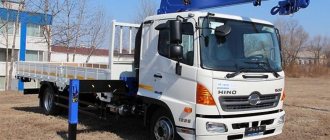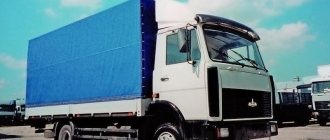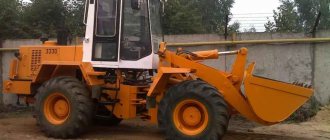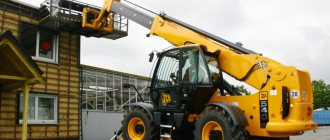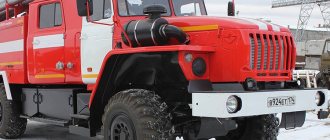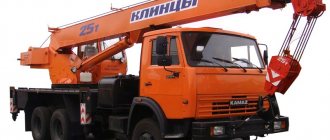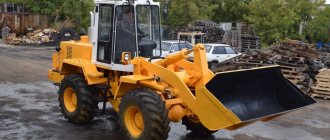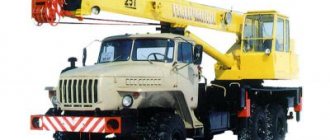Loading and unloading, installation, dismantling of equipment
Loading and unloading operations, installation and dismantling of equipment, installation in a new location are included in the rental services of a crane with a driver. The volume and complexity must be discussed with a consultant of our company. The cost of loading and unloading operations is agreed upon individually.
When placing an order for a manipulator, discuss the route, volume and possible difficulties with access to the cargo. We try to immediately calculate the correct rental price for you, so you always need to know all the details. Free consultation and rental estimate for a manipulator by phone. +7 (499) 391-39-99
Classification by load capacity and load moment
Depending on the load capacity, CMUs are conventionally divided into the following 3 classes:
- up to 1 ton (this class includes machines called micromanipulator cranes);
- from 1 to 10 tons (medium-capacity cranes);
- more than 10 tons (heavy cranes).
However, lifting capacity is somewhat a subjective indicator, since its value does not reflect the dependence of the actual maximum weight of the load being lifted on the boom reach. Therefore, it would be more correct to talk about the cargo moment. This parameter is the product of two factors: boom radius and CMU load capacity. The units of measurement for this indicator are kNm (kilonewton per meter) and tm (ton per meter). As such, there is no generally accepted classification of CMU for this parameter. For this reason, you can rely on the experience of enterprise developers. For example, the Austrian manufacturer Palfinger classifies its own machines into 3 groups:
- light class (load moment no more than 3.9 tm);
- middle class (load torque ranging from 4 to 29.9 tm);
- heavy class (load moment in the range from 30 to 150 tm).
A different classification of CMU models is offered by the Swedish manufacturer of special equipment HIAB, dividing its machines as follows:
- light class (load moment less than 10 tm);
- middle class (load moment from 10 to 22 tm);
- heavy class (load moment – 22 tm or more).
Our equipment at work
Control system
The control system in machines of this type is usually represented by a set of levers, each of which is responsible for a specific action, be it raising the boom, extending outriggers, raising or lowering the cable, etc. Often the controls are located at the base of the boom on both sides of the base of the CMU .
However, it is not uncommon for manufacturers to place these arms at the top of the boom base where the operator's seat is located. Models of cranes produced today are often equipped with remote control panels that allow you to control the operation of the cranes from a distance.
Order special equipment services from our company
Loading and unloading crane rental services with a side lifting capacity of 3 tons and above. Experienced drivers with a pass to the center. Fill out the application form or call the numbers listed on the website.
You can place an order for the rental of a manipulator crane in Moscow and the Moscow region by calling +7 (901) 546-48-68 or by filling out an application on our website.
Order a manipulator at a discount
Manipulators based on GAZelle
Manipulators based on MAZ
Manipulators based on Hyundai Gold
Manipulators based on KamAZ
Why is it convenient to work with cranes?
A machine with a manipulator is primarily a commercial vehicle. Therefore, it must generate income. Combining the functions of a crane and a truck in one special equipment allows you to save time and money, as well as differentiate risks.
Renting a CMU, for example, when building a cottage or low-rise building, will reduce costs. After all, in order to bring building materials you will not need to hire a separate truck for transportation and a team of loaders to unload them. And also a crane for lifting. All these operations can be easily performed by one person on a crane.
Author: Andrey Solomin
Share
FAQ
When choosing a crane, you need to pay attention to such a parameter as the carrying capacity of the vehicle. The maximum permissible tonnage cannot exceed the lifting capacity of the equipment by more than 25 percent. For this reason, a vehicle with a lifting capacity of 10 tons cannot be equipped with a crane larger than 2.5 tons. If the equipment is designed to deliver a load of 20 tons, then the crane can have a tonnage of up to 5 tons. If this requirement is not observed, there is a risk of damage to the supporting base of the vehicle on which the crane is mounted.
The length of the boom of a manipulator crane is the excess of the distance from the platform supports to the element being mounted. The farther your cargo is from the possible parking of the equipment, the longer the boom or wider the platform of the ordered machine should be
The load capacity of a crane is the maximum load that the machine can transport. The lifting capacity of the boom is the load that the installation crane can lift at one time.
Crane capabilities
The crane allows you to load and unload cargo, move it (in the case of equipment installation on a mobile base), and install various structures. Installing various working equipment on the boom allows you to further expand the capabilities of the CMU.
Depending on the tasks, instead of a lifting hook the following can be installed:
- Cradle for lifting workers.
- Gripper for working with containers.
- Grab for bulk materials.
- Clamps for scrap metal, pipes, timber.
- Special devices for loading and unloading curb stones.
- Equipment for vehicle recovery.
- Pallet forks.
- Drilling equipment.
Additional Information!
If the boom cross-section is a polygon, then the strength will be higher compared to a round cross-section. A larger number of edges makes the structure stronger and more reliable.
Manipulators can be used for:
- loading and unloading of trucks, small vessels, railway cars;
- transportation of inventory, equipment, materials and tools;
- installation, dismantling and transportation of various equipment (machine tools, transformers, boilers, mini-power plants) and metal structures (advertising boards);
- evacuation of cars and other equipment (rollers, bulldozers, excavators, etc.), including those in faulty condition;
- installing poles, fences, fences and even planting trees.
All this allows the use of manipulators in various fields and industries.
Italian CMU
Effer products are distinguished by a large boom reach (8–26 m). In addition to the serial production of CMU, the company works with individual orders, testing ready-made installations under conditions similar to real ones.
Effer loader crane
Fassi is the third largest manufacturer of cranes and hydraulic manipulators in Europe, which are very popular due to their safety and high performance. They can work in any climatic and weather conditions, in limited space, near power lines.
Crane-manipulator FASSI f65
Amco Veba, one of the five European leaders, has developed a lightweight crane model with a telescopic boom, consisting of five sections with a total length of 10.74 m. Tow trucks with this type of equipment are more functional than with a hook loader.
Amco Veba 105 3S loader crane
Danish CMU
Loader crane HMF 1460-K2
Hojbjerg Maskinfarik A/SHMF has been producing loader cranes under the HMF brand since 1954, with its own design developed by its founder Arne Jensen. The equipment is reliable and easy to maintain.
The modern model range is represented by various types of loader cranes: from mini, series 50, to giants Thor and Odin, capable of lifting almost 30 tons of cargo. Their smooth operation ensures precise movements and safety of the load, and intelligent automation that regulates the extension length of the telescopic boom prevents the crane from falling.
A heavy-duty manipulator is a “substantial” load!
The main “place of work” of these powerful self-loaders is construction. However, in industry, in public utilities, and in trade, there is always a lot of work for them.
The economic efficiency of these amazing machines lies in the fact that they alone, without the involvement of additional special equipment and significant labor costs of entire teams of loaders, transport a lot of heavy and large-sized cargo:
- Mobile buildings and structures (carriages, wooden log houses, bathhouses, pavilions, kiosks).
- Construction materials (even bulk packaged ones).
- Long cargo (pipes, rolled metal, timber).
- Monuments and memorials.
- Containers with goods.
- Building structures (reinforced concrete and metal).
- Industrial equipment (machine tools, power and refrigeration units, generators).
- Diagnostic medical devices.
- Large consignments of goods (divisible loads).
